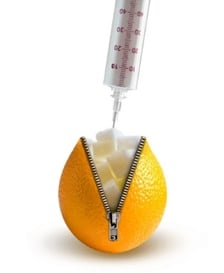Context
When adopting a glucocentric view on diabetes the hyperinsulinemic euglycemic clamp sets the gold standard for recording insulin sensitivity and time-action profiles in clinical trials (deFronzo et al., 1979; Heise & Heinemann, 2001; Heise et al., 2016). Both assessments capture the decrease of blood glucose levels following administration of exogenous insulin which again reflects the modulation of cellular glucose uptake and metabolism exerted by the hormone. Compensating for the insulin-induced decrease of blood glucose levels by clamping a defined blood glucose concentration helps to avoid effects related to fluctuating blood glucose concentrations and the physiological response to hypoglycemic states which would confound insulin sensitivity assessment. A clamping of blood glucose concentrations following insulin administration can be achieved by establishing a feedback loop using an algorithm in order to couple the insulin-induced blood glucose decline with an intravenous infusion of exogenous glucose. State-of-the art clinical research provider use CE-marked and fully automated glucose clamp medical devices such as ClampArt® in order to guarantee an excellent clamp quality in terms of trueness, coefficient of variation, precision, mean absolute relative difference, accuracy, control deviation, and utility (Benesch et al., 2015; Heise et al 2016).
Besides insulin the mass effect of glucose contributes to glucose cellular uptake and metabolism. The mass effect is often referred to as "glucose effectiveness" (Basu & Rizza, 2001). Glucose effectiveness should be taken into account when using the hyperinsulinemic euglycemic clamp for the assessment of insulin sensitivity.
In part 1 of this blog post we discuss a two-step insulin infusion protocol providing data for the calculation of human insulin sensitivity adjusted for glucose effectiveness. In part 2 we are going to discuss another two-step insulin infusion protocol combining the hyperinsulinemic euglycemic clamp with the infusion of stable isotope-labeled glucose in order to enable a differentiation between hepatic, peripheral, and systemic insulin sensitivity.

Assessment of systemic insulin sensitivity: one-step insulin infusion
In the experimental setting of a hyperinsulinemic euglycemic clamp for the assessment of systemic insulin sensitivity a constant level of hyperinsulinemia needs to be established by appropriately operating a primed constant intravenous insulin infusion. The insulin infusion rate should be strong enough to blunt hepatic glucose production and in addition to stimulate peripheral glucose utilisation. The assessment of insulin sensitivity should start following the achievement of a constant infusion rate for glucose. It is important that blood insulin gets adjusted within a concentration range where a linear dose-response relationship can be ensured. Parameters reflecting the glucose clamp quality (Benesch et al. 2015) could be used to define the criteria for steady-state achievement.
In a first approach the glucose infusion rate (GIR) at steady-state reflects the glucodynamic action related to an incremental increase of the insulin concentration in the blood. Therefore the GIR can be used for calculating a systemic insulin sensitivity index which is based on the blood glucose lowering insulin effect. For calculating the insulin sensitivity index ISI the GIRs required to maintain a defined glucose clamp level are usually normalised to the trial participant’s body mass (sometimes also to its fat free muscle mass) which defines the M value.
- M [mg·kg-1·min-1] = GIRsteady state·body mass-1 GIRsteady state ; mean glucose infusion rate at “steady state” [GIR] = mg·min-1
The insulin sensitivity index for the condition of euglycemia (ISIEu) can be calculated by normalising the M value to the blood or plasma insulin concentration at euglycemic steady state (INSsteady state):
- ISIEu [mg·L·kg-1·min-1·µU-1] = M·INSsteady state-1 INSsteady state; mean plasma insulin concentration at “steady state" [INS] = µU·L-1
That means: the higher the glucose infusion rate required for compensating the glucodynamic (i.e. blood glucose-lowering) effect of insulin at euglycemic steady-state, the higher the systemic insulin sensitivity in terms of ISIEU.
It should be noted that the assessment of human insulin sensitivity by applying a one-step insulin infusion results in a composite of hepatic insulin sensitivity (captured by the GIR proportion on account of a full suppression of hepatic glucose production) and peripheral insulin sensitivity (captured by the GIR increase related to an insulin-induced stimulation of glucose utilisation mainly by muscle and adipose tissue).
Assessment of peripheral insulin sensitivity adjusted for glucose effectiveness: two-step insulin infusion
Strictly speaking, using a one-step insulin infusion protocol for addressing systemic insulin sensitivity captures the glucodynamic effect of both insulin and glucose in itself. And it remains unclear how much one part contributes to the whole. Therefore a hyperinsulinemic euglycemic clamp using a two-step insulin infusion protocol has been proposed (Heise et al. 1998; Heise et al. 2016).
In Step 1 a high dose insulin infusion (e.g. > 1 mU·kg-1·min-1 in healthy people) should be applied in order to blunt hepatic glucose production and to stimulate peripheral glucose utilisation. At steady state (1) the GIR (1) compensates for the suppression of hepatic glucose production by both insulin and glucose and for both the glucose-induced and the insulin-induced peripheral glucose utilisation (1).
In Step 2 a higher dose insulin infusion (e.g. > 2 mU·kg-1·min-1) should be administered without changing the glucose clamp level. GIR (2) at steady state (2) again reflects both the glucose-induced and the insulin-induced peripheral glucose utilisation.
The difference between GIR (2) and GIR (1) can then be considered as being specifically related to the insulin-induced peripheral glucose utilisation – adjusted for the glucose-induced peripheral glucose utilisation.
The peripheral insulin sensitivity index adjusted for glucose effectiveness can then be calculated as follows:
- ISI = ΔM/ΔINS · BG
ΔM; difference between the M values related to GIR(2) and GIR(1) ΔINS; difference between the insulin concentrations at steady state (2) and steady state (1) BG; mean blood glucose concentration (clamp level) during both steady states
Conclusion and perspective
The glucocentric narrative about insulin sensitivity follows a well-established tradition-steeped concept about the pathogenesis, diagnosis, and treatment of diabetes with a strong impact on the development and clinical evaluation of anti-diabetic drugs and devices.
However when addressing insulin sensitivity we need to keep in mind the high diversity of insulin sensitive cells and tissues as well as signal transduction and metabolic pathways (e.g. Brown & Goldstein, 2010; Könner & Brüning, 2013). Insulin sensitivity indices based on hyperinsulinemic glucose clamps provide an excellent estimate of the glucometabolic susceptibility either of the whole body or specific body compartments to insulin. Therefore the hyperinsulinemic euglycemic glucose clamp is rightly considered setting the gold standard for the assessment of insulin sensitivity within the glucocentric conceptual framework.
Depending on the scientific question clinical trial designs should add complementary investigations addressing the insulin sensitivities of specific targets in terms of cells and tissues, signaling molecules, gene expression profiles and metabolic pathways. E.g., in view of the demographic transition with its high impact on frailty and disability the insulin sensitivity of protein metabolism (Schliess et al. 2004, Codogno & Meijer, 2010) should become obligatory when developing new medications for the treatment of elderly patients.




